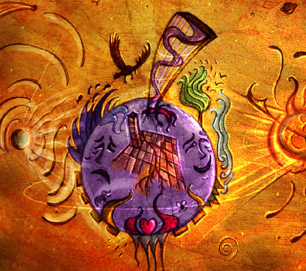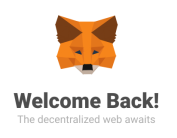The hard part for any creative person (since the rise of the ‘first web’) has been publishing, tracking, exploring, migrating from one platform to another of this strange, competitive, digital – and fickle – screen-focused world.
Sites or subscriptions come and go, or change, in the frustrating search of a decent ‘home’ for artwork etc, and not just that, but a home where people might actually discover, or support creative output. Creating one’s own blog has been an answer, but it relies heavily on WordPress skills, and this means time spent on publishing, and marketing on social media. And sure, there are lots of centralised portfolio sites out there, from Behance to Deviantart, or just Facebook. But who knows who’s selling your data, stealing your work or planning to take over the whole website? [See related posts on Facebook alternatives and Youtube alternatives on this site.]
But what about tokenisation? It’s a technology to emerge from Bitcoin and Ethereum cryptocurrency and for Web 3 protocols (and beyond) it’s starting to look pretty huge, and very interesting for creatives. But it opens up discussion again about why, how, where etc…
So… why Tokenise something?

The trading game that started it all.
CryptoKitties was the first Ethereum-based token trading dApp that became so popular it clogged the network and highlighted the early stage of decentralised blockchains. However, it also showed something amazing: Images or artwork can now become unique, ‘crypto-collectible’ items. Also, they can be traded on a global marketplace. Not only that, they can be bred with others (within a game environment) to produce new items.
A unique digital item that cannot be copied? This is all still pretty new and cool.
A big attraction with CryptoKitties is that you’re collecting or making something that is scarce, or rare. Yes, it’s a bit similar to Bitcoins, where there are only so many.
This doesn’t apply just to games. No… pretty much anything can be tokenised in a similar way, and ownership can be verified on a global, decentralised blockchain ledger.
The items (or associated transactions) can be stored/tracked/verified in digital wallets only you have access to.
Other immediate use cases? Tickets, digital art, photos, books, music, VR land/items, game items, hand-written scans…
So, let’s say you’re tokenising a digital drawing, with the ERC-721 token standard, you can add extra information including meta data, and how many editions you want to create or mint (ever). If you happen to own the original file (whether it be a JPEG or PDF) then, yes can mint more tokens, but then you’d be decreasing the scarcity value. Also, where is that JPEG stored? If it’s tokenised via IPFS etc, then it’s not bound to be lost over time.
Know About IPFS
For images and artwork, Ethereum works in tandem with IPFS, the Inter-Planetary File System protocol that stores images across the globe in a clever, new way. This is important, because it’s even better. These images will not have to be moved from one central server to another.
Many other blockchains are handling these NFT (non-fungible tokens) now too.
Other advantages or options available…

‘Earthbound’ on MakersPlace: from my original file I’ve created only 1 edition in existence as a token.
If you own a tokenised piece of original, digital art, you can sell it on for a higher price, or just use it, or print it (for personal use only).
Every token comes with a record of its entire trade/transaction history since it was minted.
The digital token can also be linked to a real-world item (such as a fine art painting) proving its authenticity. Check out projects like Verisart, Artwallet.io (read this related Ade’s Press post.)
Also, you can purchase a tiny part of a large, well-known item, allowing sellers to raise money from multiple buyers (so, for example, afford to show a painting in a gallery).
Your token may one day appear in multiple contexts, for example VR environments or platforms. Who knows? You could rent it out to feature in a future gallery in VR/AR.
You can put them up for sale to trade on multiple marketplaces, even beyond the digital world, potentially (if they are effectively linked).
Trading card games, for one, can now be digital and on a global scale.
Where + How to tokenise your artwork or images?
A good destination is to browse the OpenSea.io marketplace of ERC-71 tokens, where various marketplaces ‘feed in’ to its listings.
You can check out my own activity there, as an example of what every account will transparently show.
You will find different categories, which are actually websites/dapps in their own right. Some of these will let you mint tokens quickly and easily. Ideally, you want to include important meta data about a created piece, but it’s not always necessary. For example, Digital Art Chain is one of the categories. If you visit the website too, you can add and tokenise your own artwork very quickly to their listing. It uses IPFS automatically.
Afterwards, any tokens bought/created will appear automatically on OpenSea.io thanks to MetaMask (see below for more on this).
Other features of Opensea are that it will allow you to trade them on, even with affiliate/referral options, plus options to auction something to a highest bidder, for a designated time period.
Use a proper dapp
However, if you’re a serious artist, the best way to tokenise your own artwork is to get accepted with your work onto an art dapp / website. You’ll find the process better (with meta data options) and you’ll be able to list and categorise it correctly in the company of other artists, and create your own store.
Later, you can take whatever art pieces you’ve bought etc. and sell them back on OpenSea.io.
MetaMask Browser Extension and Wallet
Ethereum-based tokens: To buy/sell/create you will need to set up and configure the MetaMask browser plug-in, which stores Ethereum crypto (and any tokens you make or own) securely. You will need to note down your key somewhere safe, and purchase and send some ETH to it. A great thing about MetaMask is it works across any Ethereum dapp, so you won’t have to make lots of different wallets, or even log-ins. It will automatically pop-up, when actions such as logging in or verifying transactions, are required.
If we’re talking about traditional artwork like drawings/paintings, there are projects emerging that will link tokenised ‘crypto-collectible’ versions to real-world artwork via special certification etc. If someone buys your real-world painting, (with ETH or a crypto) you will need to send them the tokenised digital version too, or else it doesn’t make a lot of sense. This process is still tricky, and is being made easier thanks to emerging projects like Artwallet. These projects are working on creating this bridge or vital link more effectively. This is called a blockchain ‘oracle’ service.
For now, tokenisation makes more sense if the art is digital, since it’s been mostly designed to be viewed on-screen etc. This can include animation, graphics, memes, gifs, in-game items, photographs etc. There are already many websites looking for artists to sign up and let them handle the process, and provide an effective marketplace and community. Again, this is recommended for artists ready to sell their best work.
Investing in Digital Artwork
The revolution is unleashed, along with the token ‘ecosystems’ revolution. It’s never been so easy to invest in art (or a portion of it), and, as a bit of an artist myself, I hope to cover developments and websites now and again, here at Ade’s Crypto Press.
This will include dapps, artists, projects etc. So stay tuned..
There is also the word ‘cryptoart’ being used a lot, but it’s not always clear if this refers to art inspired by crypto/DLT or simply a collection of images that have been tokenised. Sometimes, it’s both.
Token-related art websites / dapps (2019)
MakersPlace (links to my art and photo-art work)
R.A.R.E art (and sounds): this links to a previous post about this.
SuperRare (links to my collection)
VeriArti – collectibles on the VeChain blockchain.
Digital Art Chain (also allows you to make goods/swag from your tokens).
OpenSea.io – main Ethereum-based collectible marketplace
Blockchain projects – related post.
‘Tokenise Everything’: even blogs registered on-chain?
I could even be using a WordPress plug–in from the Po.et project that timestamps and records all my posts onto a blockchain. So in a sense we’ll have tokenised blogs.
Or I could launch an ‘AdesPress Token’ that will allow you to read all this for free, purchase and do other stuff on this site, including buy my own crypto-collectibles more cheaply, or access hidden content. I guess it could be a token with value that increases if the site was to get better (with special services, access to special insights or something). But I think this ‘ecosystem’ would be too small right now!
Any questions, thoughts, ideas on any of this? Scroll down to comment.
If you found this post helpful please leave a vote.
March 2019. updated Oct 2019.



